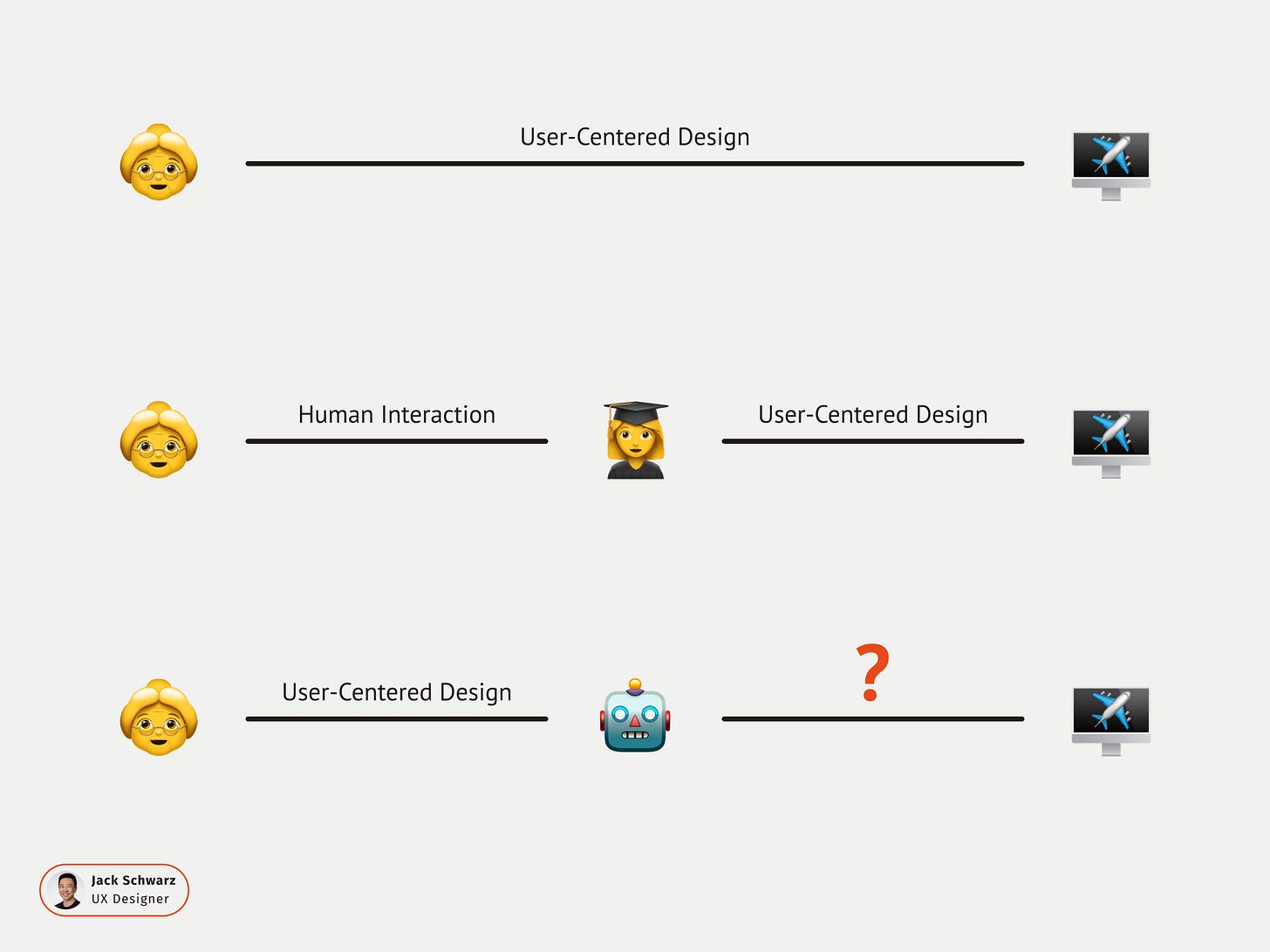A Potential Shift from User-Centered Design to Agent-driven Interactions
Your grandma can book flights herself when she has time, but she doesn’t enjoy searching on the website and comparing prices. So she sometimes just calls you, a digital native and well-educated, to book the flights for her. However, whether your grandma or you are using the website, the design logic behind it is the same. While your grandma may need a larger font size, both of you are humans who share most cognitive abilities and limitations.
With AI emerging, things can change fundamentally. In the near future, your grandma will have an AI agent, at least as smart as you, help her book the flights. (You can read this article from Bill Gates to learn more about AI agent: https://www.gatesnotes.com/AI-agents). User-Centered Design will still exist, but it will occur between humans and agents since we have to ensure the agents meet human needs. However, the design logic behind a website can be completely different because agents won’t have human limitations.
We use a proper font size and text color because it’s easy for humans to read, but agents can read text in any size without color. We design a step-by-step flow to guide users because humans are prone to getting lost, but agents can process all information in one step. Wait, why do we still need a user interface for agents? Isn’t the user interface meant for humans?
We can skip all user interfaces and let agents communicate with backend APIs directly. In a future world with advanced agents, websites and apps will become obsolete. Agents will retrieve useful data and information from various providers and generate personalized user interfaces for humans. By simply saying, “Show me different flights side by side,” you’ll get a comparison view (perhaps in your preferred colors) created by your agent, not by designers from Google Flights.
Yet that future is still out of sight. Agents are still in the early stages and can only perform simple tasks. Even if agents become intelligent enough, we must wait for the whole ecosystem to catch up. New industry standards and protocols are needed, and people need time to trust agents. During the transition phase, we’ll see some workaround solutions.
Agents can find a way to “use” the user interface like humans. For example, Apple has been working on a Multimodal Large Language Model that is capable of understanding the elements on your home screen (details: https://www.zdnet.com/article/apples-new-ai-model-can-understand-your-home-screen-and-supercharge-siri/). With this kind of ability, agents can interact with all existing websites and apps before they’re agent-ready.
On the other hand, websites and apps could detect if the visitor is a human or an agent. For humans, there will be normal user interfaces as we see today, but we could embed invisible instructions and APIs for agents to communicate directly.
There are so many possibilities in the near future. Many products will fail, and many standards will be proven temporary. Yet it will be a wonderful journey, and I can’t wait to see how it unfolds.


